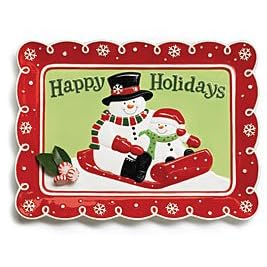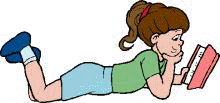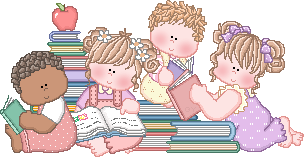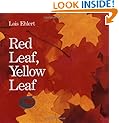It's important for children to read each day over the summer in order to maintain their great progress. Below are some free reading programs available in the Milwaukee area that offer incentives :)
West Allis Public Library Summer Reading Program
Dream Big Read!
The 2012 Summer Reading Program will run from June 4th through August 25. By reading library books and/or magazines children can earn coupons to area attractions, activity sheets, and chances to win some special prizes. Read 100 books or read for 2000 minutes and earn a paperback book and more. Read at your own pace. Children who are read to can also join. Stop in the library to find out even more information.
Barnes and Noble Summer Reading Program for Kids
The Barnes and Noble summer reading program for kids gives kids a free book when they read 8 books over the summer.
The Barnes and Noble summer reading program for 2012 is called Imagination's Destination.
How to Get Free Books From the Barnes and Noble Summer Reading Program:
Visit
Barnes and Noble summer reading program to download and print a reading journal. Fill out the student information on the first page of the journal. A parent must sign on this page in order for the child to get a free book.
After your child reads a book they need to write down the title, author, and who they would recommend the book to and why in the reading journal. Your child will need to read 8 books to be able to get a free book from the Barnes and Noble summer reading program.
Bring the completed and signed reading journal into your local Barnes and Noble book store between May 22, 2012 and September 4, 2012. Present it to an employee and they will let your child choose a book from the free book list.
Types of Free Books Available From the Barnes and Noble Summer Reading Program:
There's a wide variety of free books available for kids from the Barnes and Noble summer reading program.
Children in grades 1-2 are eligible to receive one of the following books:
· Alvin and the Chipmunks: Chipwrecked
· Danny and the Dinosaur
· Fancy
Nancy: Fancy Day in Room 1A
· Jorge el curioso: El jonron
· Lego Hero Factory: Meet the Heroes
· Martha habla: Martha hornea un pastel
· National Geographic Readers Series: Titanic
Kids that are in grades 3-4 can pick out one of these books:
· American Girl Series: McKenna
· George Brown, Class Clown #7: Attack of the Tighty Whities
· Half Magic
· Justin Case: School, Drool, and Other Daily Disasters
· Lulu and the Brontosaurus
· The Mouse and the Motorcycle
Those children that are in grades 5-6 can choose from this list of books:
· Junonia
· The Miraculous Journey of Edward Tulane
· The Phantom Tollbooth
· Smile
· Underwolrd Series #1: The
Battle Begins
Other Features of the Barnes and Noble Summer Reading Program:
The Barnes and Noble summer reading program website also has parent and educator activity kits. These kits include fun activities about reading that can be completed with a child.
Limits to Be Aware Of:
The Barnes and Noble summer reading program is only available to school-aged children in grades 1-6.
Only one book is available for each child who completes a reading journal and choice must be made from the selected books available at the store.
Half Price Books Summer Reading Program for Kids
The Half Price Books summer reading program for kids 14 and under gives out free Half Price Books gift cards to kids who read for at least 300 minutes during June and July.
The Half Price Books summer reading program for 2012 is called Feed Your Brain Summer Reading Program and it runs from June 1 to July 31, 2012.
Type of Reward Available From the Half Price Books Summer Reading Program:
If a child reads at least 300 minutes during June and July they can submit their reading log to get $5 worth of Half Price Books back-to-school bucks.
These back-to-school bucks can be used like a gift card to make a future purchase.
One lucky reader in each age group, per store, will be randomly selected to get $20 in Half Price Books back-to-school bucks.
How to Get Free Gift Cards From the Half Price Books Summer Reading Program:
Each day your child reads during June and July have them write the number of minutes they've read on that day on the calendar located on the second page of the PDF file. They can add up the total June and July minutes at the bottom of the calendar.
After the child has read at least 300 minutes, fill out their name, age, total minutes, your initials, their age group, and your mailing information.
Cut out the completed part of the form and bring it into your
local Half Price Books to get your free back-to-school bucks.
Limits to Be Aware Of:
Each child is limited to only $5 in Half Price Books back-to-school books.
The back-to-school bucks are valid from July 25, 2012 to August 31, 2012.
 Would your child rather empty the dishwasher or fold laundry instead of reading a book? Do you have to beg your child to sit down and read—for school or for pleasure? When you see other kids with their noses in books, do you wonder why you never see your own children doing the same? It’s hard to know how to react when your child hates reading, and even harder to figure out how to motivate children to read. Try these simple, but meaningful steps to help move your reluctant reader toward a book-filled future:
Would your child rather empty the dishwasher or fold laundry instead of reading a book? Do you have to beg your child to sit down and read—for school or for pleasure? When you see other kids with their noses in books, do you wonder why you never see your own children doing the same? It’s hard to know how to react when your child hates reading, and even harder to figure out how to motivate children to read. Try these simple, but meaningful steps to help move your reluctant reader toward a book-filled future: 






 Facts about Title One Reading
Facts about Title One Reading
















